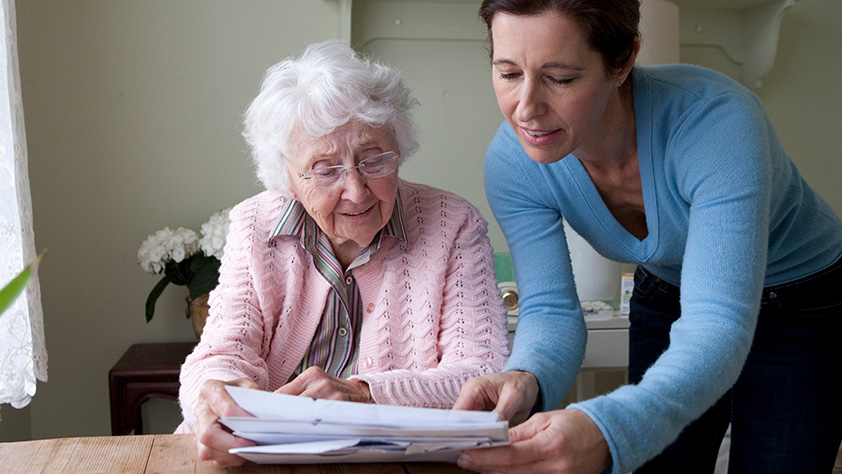Nearly 20 years ago, when my children were toddlers, my mother came to live with us. She was retired and in good health, but it was no longer feasible for her to live alone in her neighborhood. I thought, “How bad could it be? She’s a gourmet cook, a talented pianist. It will be good for the kids. Maybe it will be good for all of us.” And so she moved. We gave her our master bedroom and turned the third floor office of our Victorian house into our room. Two weeks later, she had a massive stroke and lost much of the movement on her right side. And now I had another role: wife, mother, professional and caregiver.
I don't know if Long Term Care Insurance even existed then, but we didn't know about it or have it. We had a caregiver come in part time, three days a week, to help my mom. My mother had health insurance and Medicare, but we were surprised to learn that neither of those pay for Long Term Care Services. So we paid for her caregivers ourselves. If we had to do it today, the cost would be overwhelming.
I worked four days a week back then. We had a full-time babysitter for the kids. It was a blessing that the baby-sitter was there, because if Mom fell, which she sometimes did, she could not get up. One night I came home to Mom sitting on the floor in the kitchen and the baby-sitter was sitting with her keeping her company. Mom fell and the baby-sitter couldn’t lift her. So she sat and talked with her.
Those days were a blur of errands, chores and work. I remember thinking of laundry as a marathon each week, washing clothes and linens for three adults and two little children. Just leaving the room required extensive explanations. “Where ya goin’?” the baby would say. “Upstairs for my glasses.” “Where are you going?” The 4 –year old would ask. “Upstairs for my glasses,” I’d repeat. And then, somehow missing that conversation, Mom would inquire, “Where are you going?” “Upstairs for my glasses,” I’d say irritably.
I’ve never been so exhausted, physically and mentally. There was bathing and dressing everybody, kids and Mom. And dealing with everyone’s tantrums and emotional swings, kids and Mom. And cooking and cleaning. And negotiating some semblance of balance of chores with my husband, who traveled a lot for work. And being confused and stressed and unsure if I was doing the right thing for my mother’s care.
I bought long-term care insurance when I was 49, a bit younger than the average. By then, my mother had passed away and my son and daughter were in high school. Occasionally, I wondered which of them might make a better caregiver if I ever needed one. But I don’t want them to go through what I did. So I bought insurance so I could potentially have some control. Like most policies, mine will assign a care coordinator to help the family assess my needs, plan for care and even identify caregivers. It covers home modifications, such as ramps or grab bars in the shower, to help me remain at home. Of course it covers caregivers to come to my home. And if I ultimately need to go to a nursing home, it will allow me to afford the best facility possible.
My health is outstanding and I have every expectation of living a long, healthy life. But there is a chance that some day when I am 90, I will need some help with a few everyday activities. If that happens, my long-term care insurance will help me to remain in my home. It will pay for caregivers to do the heavy lifting. When my children and future grandchildren visit, it will not be to work, it will be for movie night or game night with grandma.












